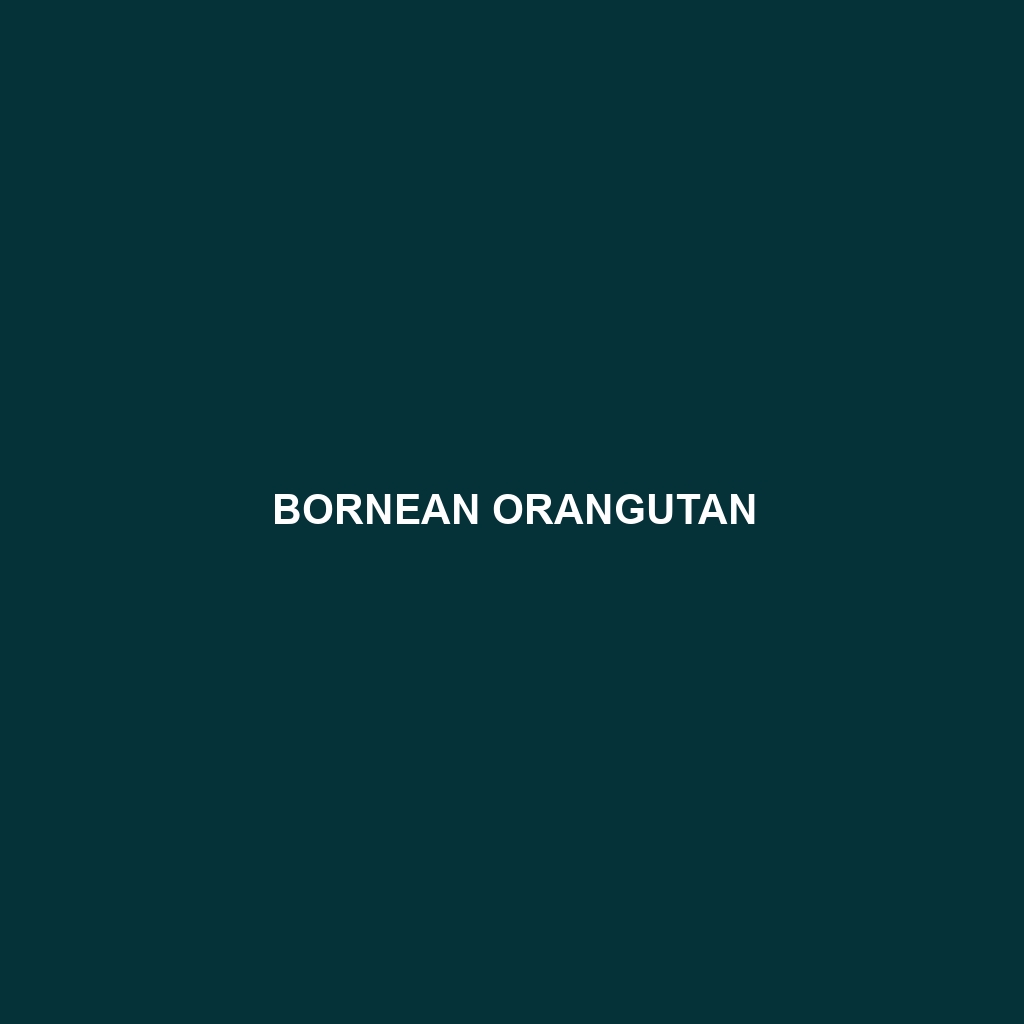Bornean Orangutan (Pongo pygmaeus)
The Bornean orangutan, scientifically known as *Pongo pygmaeus*, is a critically endangered species of great ape native to the island of Borneo. Known for their remarkable intelligence and closely related to humans, these majestic creatures are distinguished by their reddish-brown hair and highly solitary nature. They are one of the three species of orangutans, alongside the Sumatran and Tapanuli orangutans.
Physical Characteristics:
Size: Bornean orangutans exhibit sexual dimorphism. Males are significantly larger, weighing between 110-220 pounds (50-100 kg) and standing up to 4.5 feet (1.37 meters) tall. Females are smaller, weighing around 66-110 pounds (30-50 kg).
Coloration: They have a distinctive reddish-brown coat, which varies from orange to dark brown. The hair is long and shaggy, offering some protection from rain.
Special Features: Adult males typically develop large cheek pads, also known as flanges, and a throat pouch used for vocalizations. These features are less prominent or absent in females and younger males. Their long arms, with a span reaching over 7 feet (2.1 meters), are adapted for brachiation.
Behaviors:
Social Interactions: Bornean orangutans are predominantly solitary, with adult males and females coming together only for mating. Females are usually accompanied by their dependent offspring. Males are more territorial and will often avoid each other’s ranges.
Feeding Habits: These apes are primarily frugivorous, with fruit comprising over 60% of their diet. They also consume leaves, bark, flowers, and insects. They use their intelligence to forage and sometimes fashion tools to extract insects or seeds.
Ecological Roles: As seed dispersers, Bornean orangutans play a crucial role in maintaining the health and diversity of tropical forests. By spreading seeds through their feces, they help in the regeneration of forest areas.
Habitats:
Bornean orangutans inhabit the lowland and hilly tropical rainforests of Borneo, preferring areas with abundant fruit trees. They can also be found in peat swamp forests, dipterocarp forests, and montane forests up to 1,500 meters above sea level.
Adaptations:
Arboreal Lifestyle: Their long arms and grasping hands and feet are perfectly adapted for life in the trees, allowing them to move through the forest canopy with ease.
Tool Use: They are known to use leaves as umbrellas and gloves, and branches as tools, showcasing their problem-solving abilities and adaptability.
Delayed Development: They have a long developmental period, with young orangutans staying with their mothers for up to 6-8 years, learning essential survival skills.
Conservation Status:
The Bornean orangutan is classified as Critically Endangered by the IUCN. The primary threats to their survival include habitat destruction due to logging, palm oil plantations, and illegal hunting. Conservation efforts include habitat protection, rehabilitation centers, and reforestation projects.
Fun Facts:
Bornean orangutans share about 97% of their DNA with humans, making them one of our closest relatives in the animal kingdom.
They are known to build intricate nests to sleep in each night, often high up in the trees to avoid predators.
Bornean orangutans can live up to 35-45 years in the wild, with some individuals living even longer in captivity.
By understanding and appreciating the unique attributes and essential roles of Bornean orangutans, we can better advocate for their conservation and the preservation of their natural habitats.
